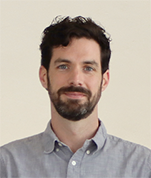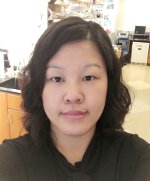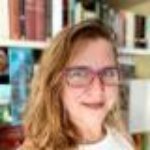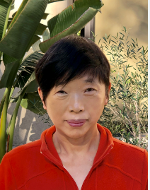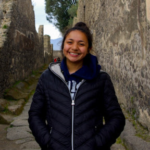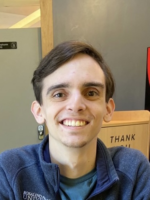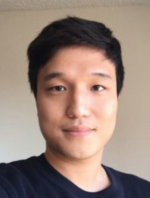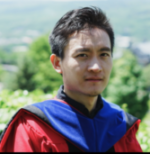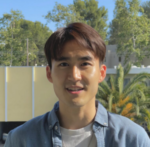People
Dr. Viviana Gradinaru completed her B.S. at Caltech and her Ph.D. research at Stanford University and is now the Lois and Victor Troendle Professor of Neuroscience and Biological Engineering at Caltech. In 2024, Dr. Gradinaru was selected as a Howard Hughes Medical Institute Investigator.
Dr. Gradinaru's research interests focus on developing tools and methods for neuroscience (optogenetic actuators and sensors; tissue clearing and imaging; gene delivery vehicles) and using them to characterize circuits, including those underlying locomotion, reward, and sleep.
Prof. Gradinaru has received the many honors and awards, including: election as a fellow of the American Association for the Advancement of Science (AAAS) and of the National Academy of Inventors (NAI), NIH Director's New Innovator and Pioneer Awards, a Presidential Early Career Award for Scientists and Engineers, World Economic Forum Young Scientist, one of Cell's 40 under 40, Sloan Fellow, Pew Scholar, Moore Inventor, Vallee Scholar, and Allen Brain Institute NGL Council Member, the inaugural Peter Gruss Young Investigator Award by the Max Planck Florida Institute for Neuroscience, Early-Career Scientist Winner in the Innovators in Science Award in Neuroscience (Takeda and the New York Academy of Sciences), Gill Transformative award, twice a finalist for the Blavatnik National Awards for young scientists, Vilcek Prize for Creative Promise in Biomedical Science, Outstanding New Investigator Award by the American Society of Gene & Cell Therapy, and the Society for Neuroscience Young Investigator Award.
Viviana Gradinaru has also been very active in teaching and service, participating with lab members in regular technology training workshops at Caltech and for summer courses at Cold Spring Harbor Laboratory as well as advising the CLOVER Center.
Tim Shay, Ph.D.
(formerly Miles)
Director
Tim received his B.S. from Haverford College and his Ph.D. in Molecular Biology and Biochemistry from Caltech, where he studied molecular recognition in ligand-gated ion channels. After an AHA postdoctoral fellowship at Stanford University School of Medicine studying the molecular mechanisms of G protein-coupled receptor chemokine-binding and biased signaling, Tim joined the Department of Molecular Medicine at City of Hope Cancer Center, helping launch Akrevia (now Xilio) Therapeutics. Since joining CLOVER in 2019, Tim has leveraged his experience in combinatorial biology and protein biochemistry to advance CLOVER's core technologies and to facilitate their broad adoption.
Zhe Qu, Ph.D.
Research Scientist & CLOVER Manager
Zhe received her Ph.D. in Biochemistry and Molecular Biology from China Agricultural University and her postdoctoral training in biochemistry and neuroscience at the University of Missouri. Before joining the CLOVER center, Zhe worked at Southern Methodist University as a senior research associate studying the molecular mechanisms of neurodegeneration.
Izabela Giriat, Ph.D.
Research Scientist
Izabela received her Ph.D. in Synthetic Protein Chemistry from Rockefeller University and her postdoctoral training in Biological Chemistry at UCLA. In CLOVER, she is interested in AAV receptor identification.
Yaping Lei, M.S.
Research Associate
Yaping Lei got her masters degree of biochemistry and molecular biology from the University of Southern California. She worked at the Center for Craniofacial Molecular Biology of University of Southern California before joining the CLOVER Center.
Kristen De La Torre, M.S.
Research Technician Assistant
Kristen received her B.S. in 2021 and M.S. in 2023, in biological sciences from Cal Poly Pomona University. Her thesis at Cal Poly Pomona, studied the cellular mechanisms that play a role in the brain in mice, during West Nile Virus infection.
Bill Kavvathas, B.S.
Research Technician Assistant
Bill received his B.S. in Neuroscience from UC Riverside in 2022. In undergrad, Bill worked in the Wilson Lab at UCR which investigated the mechanisms as to why the immune system creates a balance with Toxoplasma gondii during chronic infection.
Pat Anguiano
Administrative Assistant
.
Seongmin Jang, Ph.D.
Postdoctoral Fellow
Seongmin received his BS, MS, and PhD in biology at KAIST. His doctoral thesis focused on understanding the molecular mechanisms of epigenetic gene regulation using an integrative structural biology approach. He determined the cryo-EM structure of DOT1L histone H3 K79 methyltransferase recognizing H2B ubiquitinated nucleosome. In the Gradinaru lab, Seongmin is interested in structural approaches to understanding cell recognition and invasion by engineered AAV.
Changfan Lin, Ph.D.
Postdoctoral Fellow
Changfan received his B.S. degree at Tsinghua University, Beijing, China in 2014. He pursued his doctoral degree at Cornell University, USA, with mentor Professor Brain Crane. His work focused on understanding the molecular mechanism of the drosophila circadian clock and engineering its light sensing protein Cryptochrome for optogenetic applications. He led the project to solve the first cryo-EM structure of the protein complex of Cryptochrome and Timeless, which are the core components of the circadian rhythm. In the Gradinaru lab, he aims to develop AAV shielding strategies to evade undesired immune responses for more efficient and safe gene therapy, as well as AAV engineering for more specific targeting.
Alex Jin Chung
Graduate Student
Alex received his B.S. in neuroscience with a specialization in data analytics from the University of Southern California. During his undergraduate, he investigated developmentally regulated changes along the cortical basal ganglia pathways, which regulate motor skill learning, in songbirds (Taeniopygia guttata). In the Gradinaru lab, he is working to develop tools for genetic access in the Egyptian spiny mouse (Acomys cahirinus), the only mammalian species known to be capable of regeneration without fibrosis.
Fiona Ristic, CLOVER Research Technician Assistant (2024 - 2025)
Research Technician, Gradinaru lab, Caltech
Damien Wolfe, CLOVER Research Technician Assistant (2019 - 2024) & ASPIRE Program Manager (AY2022 - Su2024)
Lecturer, College of the Sequoias
Erin Sullivan, CLOVER Research Technician Assistant (2019 - 2024)
Scientist, Biotech Startup
Xinhong Chen, CLOVER Research Scientist & Director of Experimental Protein Engineering (2023 - 2024)
Co-Founder, Biotech Startup
Xiaozhe Ding, CLOVER Research Scientist & Director of Computational Protein Engineering (2023 - 2024)
Co-Founder, Biotech Startup
Josette Medicielo, CLOVER Research Technician Assistant (2021 - 2022)
Technician, Chan Zuckerberg Biohub
Ayoola Fadonougbo, Caltech WAVE Fellow (2022) & Amgen Scholar (2023)
B.S. '24 CSU Long Beach, Research Technician at University of Pittsburgh
Sripriya Ravindra Kumar, CLOVER Research Scientist & Director of AAV Engineering (2020 - 2021)
Director, AAV Capsid Engineering, Gene Therapy Research, BioMarin Pharmaceutical
Nicholas Flytzanis, CLOVER Interim Director (2018 - 2019)
Co-Founder and Chief Scientific Officer, Capsida Biotherapeutics
Keith Beadle, CLOVER Research Associate (2016 - 2018)
Research Associate, Oregon Health & Science University
Qin (Helen) Huang, CLOVER Research Scientist (2016 - 2018)
Research Scientist, Vector Engineering, Stanley Center for Psychiatric Research, Broad Institute of MIT and Harvard
Benjamin Deverman, CLOVER Director (2015 - 2018)
Director, Vector Engineering, Stanley Center for Psychiatric Research, Broad Institute of MIT and Harvard


